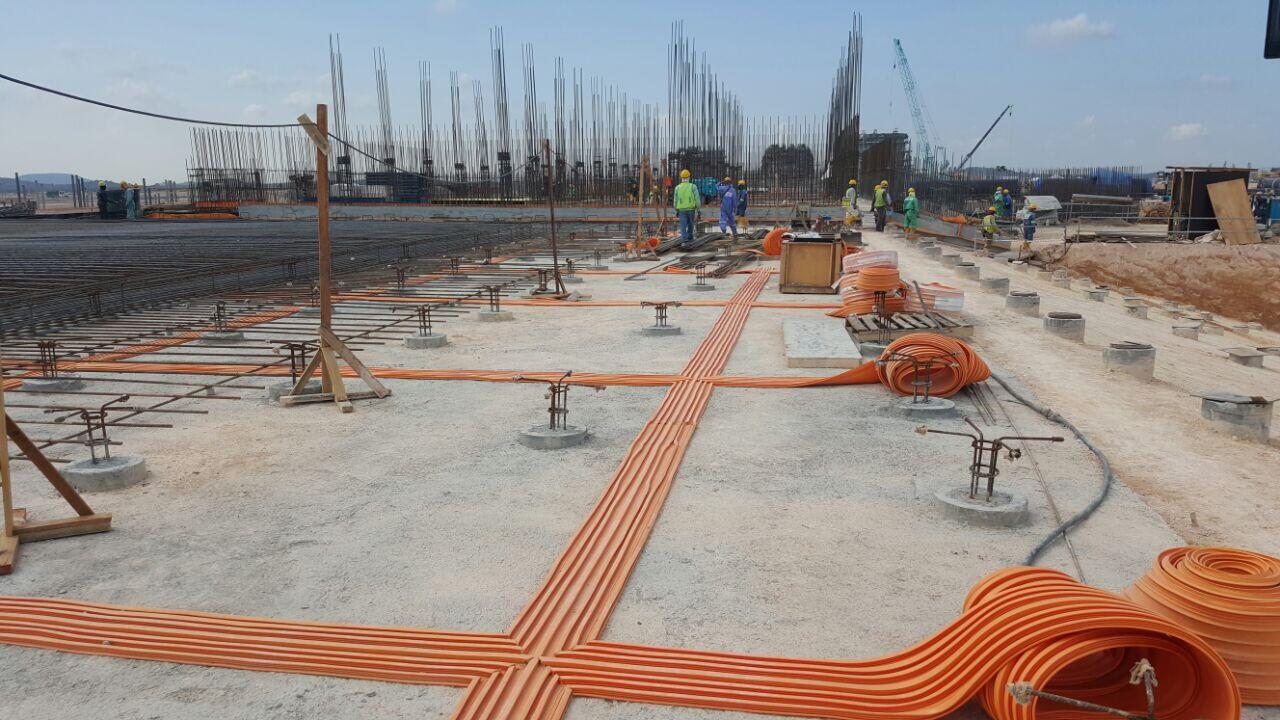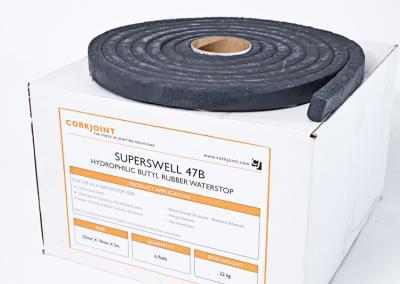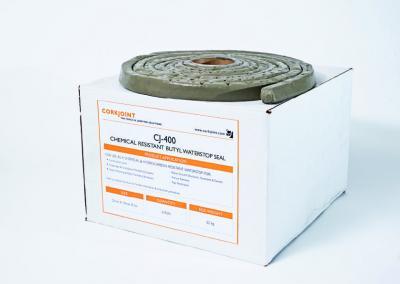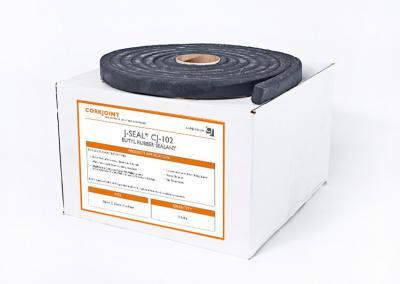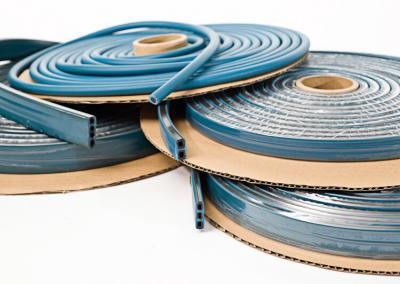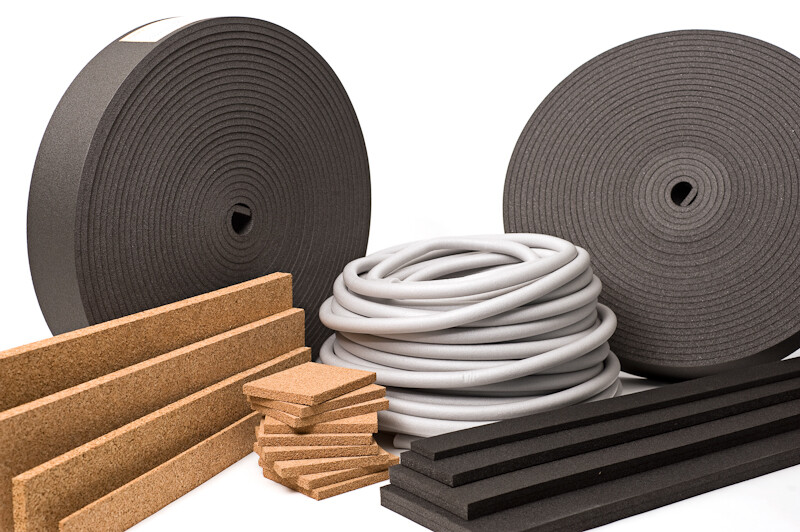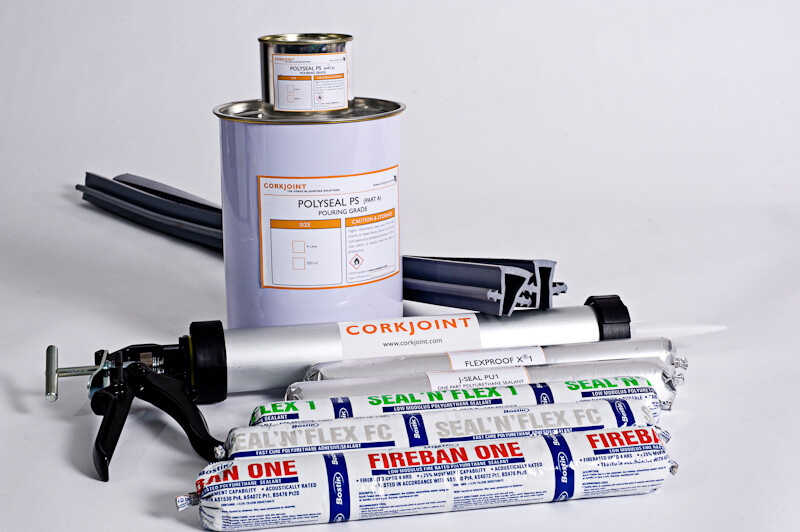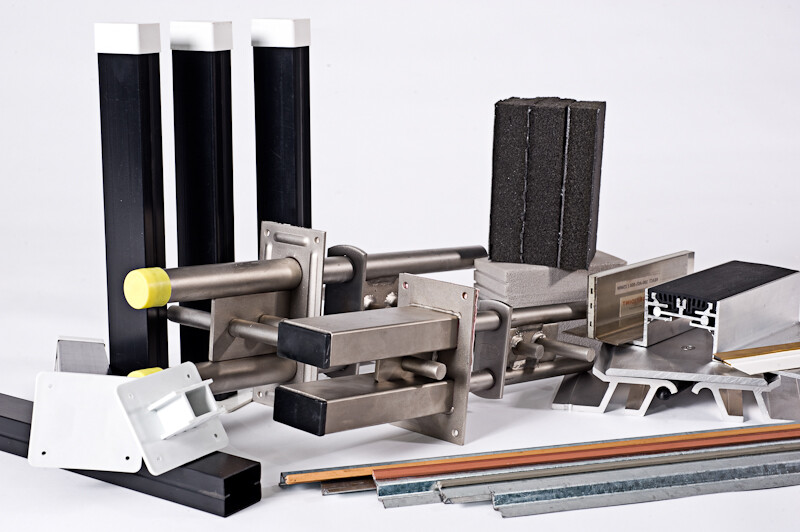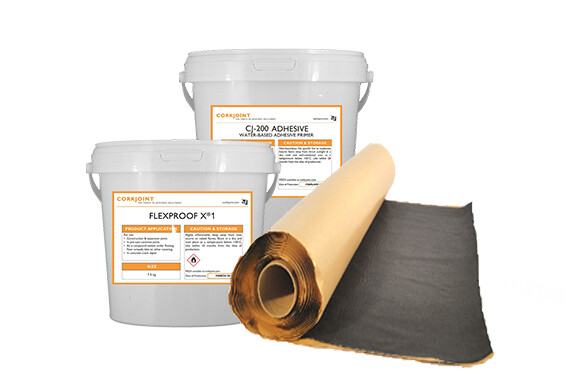WATERSTOPS TYPICAL INSTALLATIONS IN CONSTRUCTION PROJECTS
CORKJOINT® is a specialist in the development, manufacture and supply of many types of waterstops. This Waterstops Guide is designed to quickly refer our customers to all our Waterstop Standard Products and examples of Waterstops Typical Installations. Note that the use of any product in any application should be approved as suitable for use/application by the Design Engineer and Project Engineer.
STOP® PVC WATERSTOP
Typical Waterstop Installations
INTERNAL & EXTERNAL STYLE SURE-STOP® PVC WATERSTOPS
- Prior to placement, all Sure-Stop® PVC Waterstop joins and intersections must be welded together on site using our recommended welding and joining procedure (refer to our “CORKJOINT® Sure-Stop® PVC Waterstop Site Joining Guidelines” brochure). Read More
How to Join PVC Waterstops – Welding Demonstration
TX-100 PVC WATERSTOP
Typical Waterstop Installations
- Installation of TX-100 PVC Waterstop must be in accordance with our recommended installation procedures. (refer to our “installation method guideline”) or refer to your designer engineer’s recommendations.Read More
XB PVC WATERSTOP
Typical Waterstop Installations
- Installation of XB PVC Waterstop must be in accordance with our recommended installation procedures. (refer to our “installation method guideline”) or refer to your designer engineer’s recommendations. Read More
SURE-STOP® Rubber (TPE) Waterstop
Site Joining
CORKJOINT® recommends the use of its specialised welding equipment for on-site welding which consists of thermostatically-controlled Welding Irons and special Welding Jigs (each type of CORKJOINT® Sure-Shield® TPER Waterstop requires its own welding jig to suit the particular shape). Read More
SURE-SHIELD® TPER Chemical Resistant Waterstop
Site Jointing
CORKJOINT® recommends the use of its specialised welding equipment for on-site welding which consists of thermostatically-controlled Welding Irons and special Welding Jigs (each type of CORKJOINT® Sure-Stop® Rubber (TPE) Waterstop requires its own welding jig to suit the particular shape). Read More
SUPERSWELL® 47B Hydrophilic Butyl Waterstop Seal
Typical Waterstop Installations (includes video)
- Installation of 47B Hydropholic Butyl Waterstop Seal must be in accordance with our recommended installation procedures. (refer to our “installation method guideline”) or refer to your designer engineer’s recommendations. Read More
Superseal CR-400 Chemical Resistant Butyl Waterstop Seal
Typical Waterstop Installations
- Installation of Superseal CR-400 Chemical Resistant Butyl Waterstop Seal must be in accordance with our recommended installation procedures. (refer to our “installation method guideline”) or refer to your designer engineer’s recommendations. Read More
J-SEAL® CJ-102 BUTYL RUBBER SEALANT
Typical Waterstop Installations
- Installation of J-SEAL® CJ-102 BUTYL RUBBER SEALANT must be in accordance with our recommended installation procedures. (refer to our “installation method guideline”) or refer to your designer engineer’s recommendations. Read More
HYDROTITE Hydrophilic Chloroprene Rubber Waterstop
Areas of Application
Hydrotite is to be used where watertight integrity is the prime issue. Typical applications where there is a need to achieve a water seal include: Read More
CJ FORM-TIE WATERSTOP
Typical Waterstop Installations
Typical Applications
Typical Installations…. Read More
LEAKMASTER LV-Z Hydrophilic Gun Grade Waterstop
Areas of Application
Application Procedures
For the LEAKMASTER LV-Z Hydrophilic Gun Grade Waterstop.
1. Surface must be clean, dry and free of dirt, grease, oil & water.
2. Stir adhesive thoroughly before use. Read More
HYDROSTOP® CJ1 Injection Hose System
Typical Waterstop Installations
- The surface to receive the Hydrostop® CJ1 must be structurally sound, clean, free from dust and laitance, be flat and not overly rough or have deep pitted holes, and any exposed aggregate to be chipped off.
- Hydrostop® CJ1 is preferably positioned in the middle of the substrate and must have a 100mm minimum cover of concrete from any outside edge. Refer to Drawing 1 & 2. Read More
HYDROSTOP® ACRYLIC GEL Injection Sealing Material
Areas of Application
Injection Guidelines for Injection Hose System
The following injection procedure is based upon the use of Hydrostop Acrylic Gel (HAG) injection material. For an injection process using P.U, E.P or UFC, contact CORKJOINT® for further information.
- Prior to undertaking an injection process, check that the Hydrostop® CJ1 is free and clear, by injecting with water or air. Locations of the joint that have exposed voids or areas that have moisture or water slowly leaking from them, use a quick dry cement to help plug the area so to help prevent the egress of injection material out of the joint during the injection process. Read More
CJ EPOXY ADHESIVE
Typical Installations
- MIXING – Mix both components in the correct ratio and mix thoroughly until a uniform colour is obtained. DO NOT mix quantity greater than 1.0kg as this will cause excessive heat build-up, will affect the pot-life and is also difficult to handle due to short processing time. Read More
CJ-100 ADHESIVE
Areas of Application
Application Procedures
For the LEAKMASTER LV-Z Hydrophilic Gun Grade Waterstop.
- Surface must be clean, dry and free of dirt, grease, oil & water.
- Stir adhesive thoroughly before use. Read More

